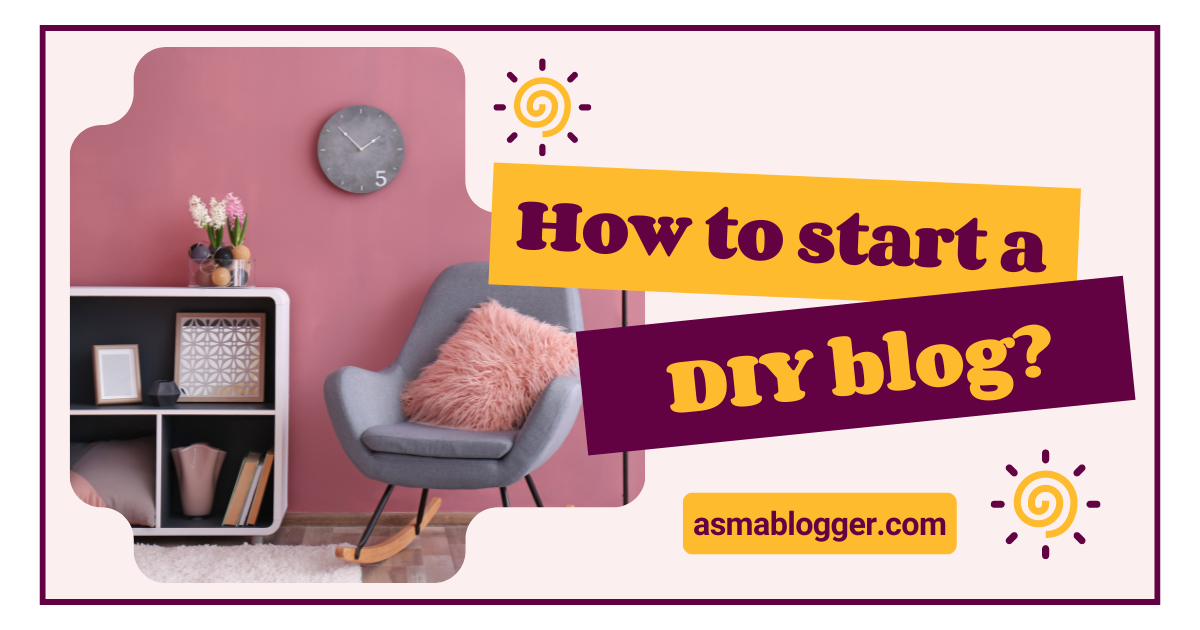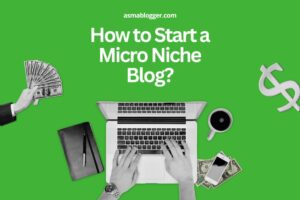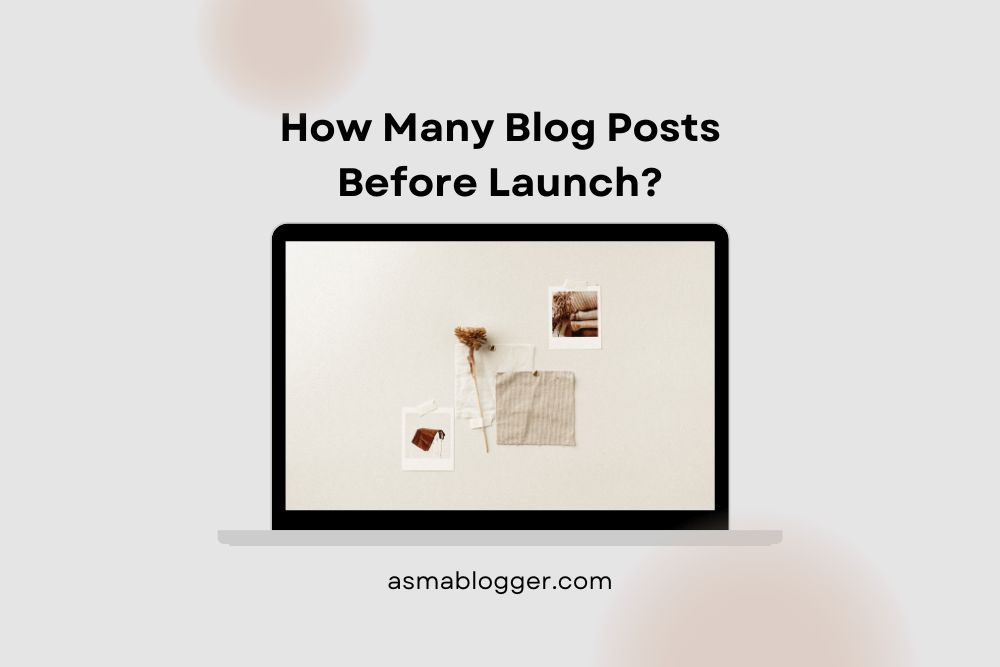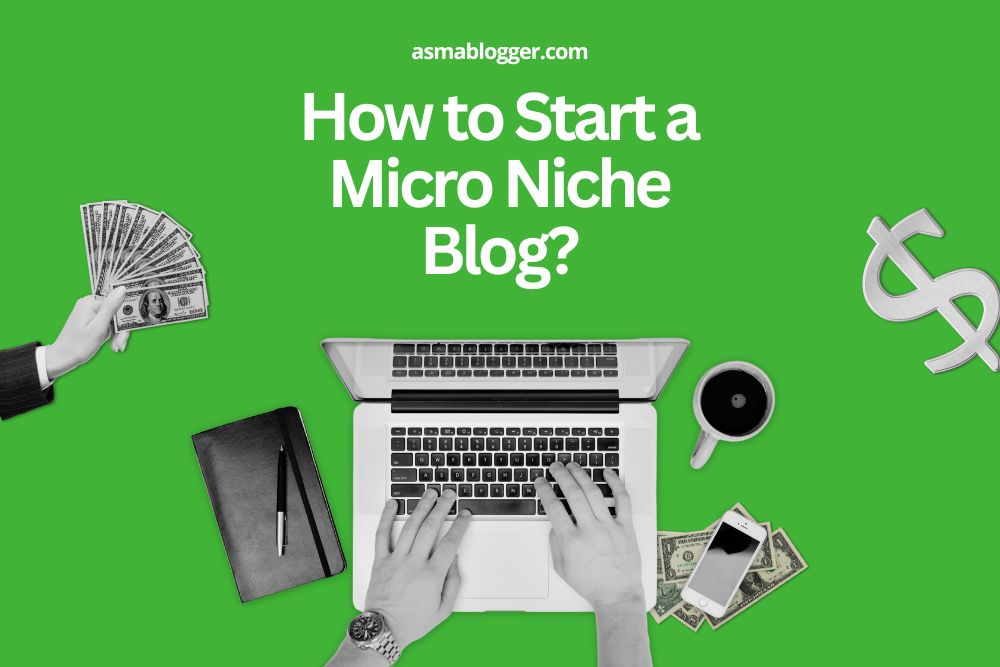Did you know that DIY blogs can generate up to $5,095 a month in income? Imagine turning your crafting passion into a profitable venture! Starting a DIY blog isn’t just about sharing your latest project; it’s a powerful way to build an audience and make money doing what you love. I’ve managed and grown numerous DIY blogs, and trust me, it’s easier than you think! In this guide, I’ll walk you through how to start a DIY blog and make it financially rewarding. Let’s dive in and turn those craft dreams into reality!
Table of Contents
ToggleWhat are the benefits of starting a DIY blog?
Starting a DIY blog is a wild ride, but it’s one of the most rewarding decisions you can make if you love creating with your hands. I’ve seen it firsthand, managing DIY blogs for clients who transformed their passions into thriving online communities. Even if you’re not a natural writer, you can learn as you go, and before you know it, you’ll be connecting with like-minded folks who share your passion.
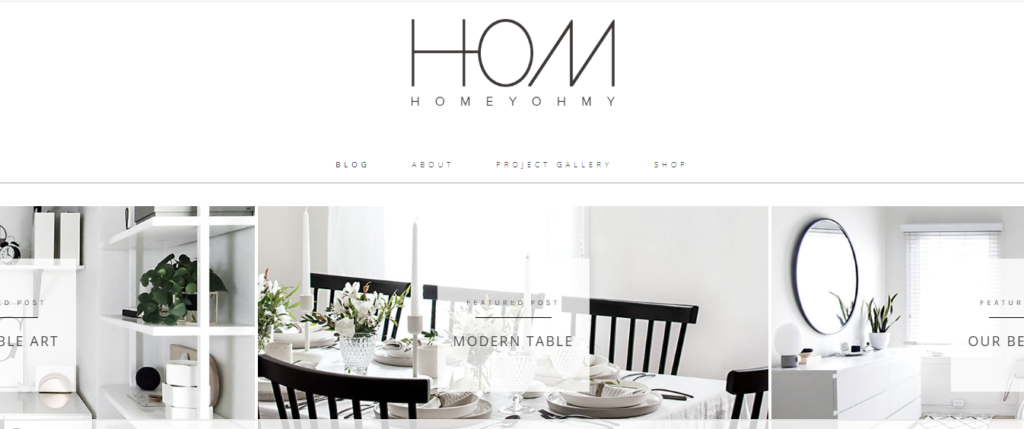
Example of a DIY blog: Homey Oh My! is an LA-based home lifestyle blog by Amy, featuring creative DIY projects like Geometric Candle Holders and Gold Goblet Planters, all with a focus on home organization and beautiful photography.
Connecting with a Like-Minded Community
Starting a DIY blog opens doors to a vibrant community of fellow enthusiasts. It’s more than just showcasing your projects; it’s about diving into conversations with people who share your passion. Whether they’re offering support in comments or interacting on social media, these connections can become a source of inspiration and encouragement.
Showcasing Your Unique Skills
Your DIY blog is the perfect stage to highlight your special skills. Whether you’re into woodworking, sewing, or home renovation, your blog lets you display your expertise. Focus on a niche—like upcycling old furniture—to attract a dedicated audience. A well-defined niche helps you stand out and become a go-to resource in that area.
Earning Money While Doing What You Love
On average, DIY blogs can make around $5,095 per month. But here’s the catch: your earnings depend on traffic, monetization methods, and how engaged your audience is.
For instance, if you get 10,000 page views a month, ads might earn you about $278.60. However, if you’re selling digital products, you could see earnings of over $3,600 with that same traffic (source).
In the first year, bloggers often earn between $500 and $2,000 a month (source). With consistent effort and smart strategies, your DIY blog could turn into a solid income stream. So, if you’ve got a passion for DIY, why not give it a go?
Improving Your Writing Skills
Blogging regularly sharpens your writing abilities. It’s not just about grammar but also about finding and refining your unique voice. Over time, your writing will become more engaging and personal. These improved writing skills can benefit other areas of your life, from emails to resumes.
Building Authority and Trust
In the DIY world, authority comes from being helpful and knowledgeable. By providing detailed tutorials, honest reviews, and practical advice, you build trust with your readers. Additionally, this credibility can lead to exciting opportunities like brand partnerships and speaking engagements, boosting your blog’s visibility and influence.
Now, let’s discuss how to start a DIY blog!
Step 1 (How to start a DIY blog): Choose the Right Niche for Your DIY Blog
Start with Your Passion
Choosing the right niche for your DIY blog can feel like trying to pick a favorite child—it’s tough! You might be into everything from knitting to home renovation, but narrowing down your focus is key. Think about what gets you excited. If you’re always tinkering with upcycling furniture, maybe that’s your golden ticket. Your passion will fuel your content and help you stay motivated, even when inspiration runs low.
Get Specific with Your Niche
DIY is a vast universe, and the best blogs often zoom in on a specific area. Instead of a broad “DIY blog,” try focusing on something like “DIY Wedding Decorations” or “Beginner Woodworking Projects.” Also, this helps you target a specific audience who’s searching for exactly what you offer. Trust me, readers appreciate a blog that’s all about their particular interests. It’s like finding a niche within a niche.
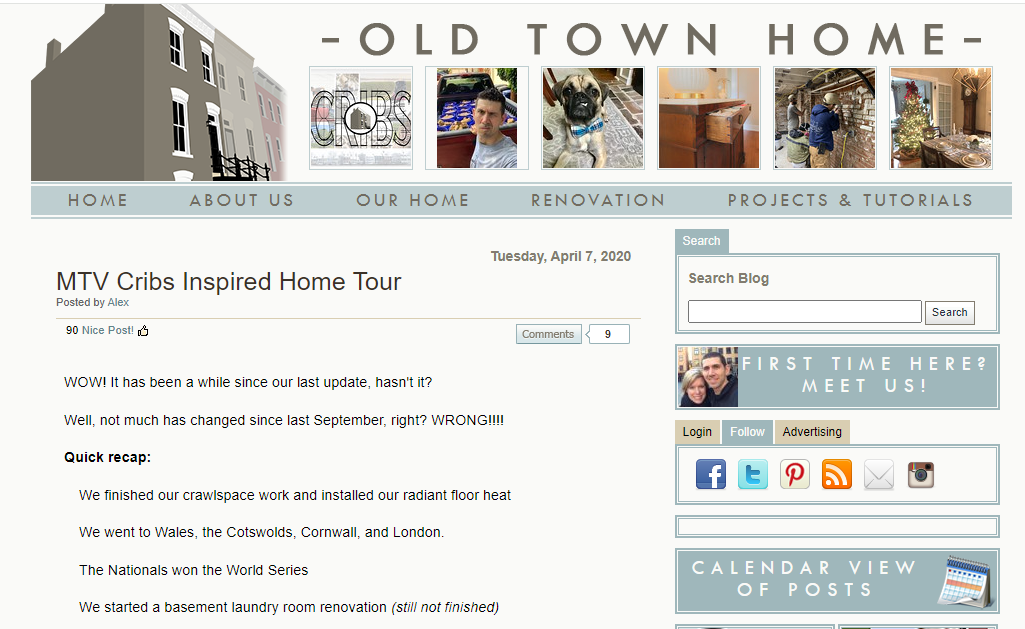
Check Out the Competition
It’s smart to peek at what’s already out there. Look up existing blogs in your chosen niche and see what they’re doing. Are they popular? What kind of content do they produce? Tools like Google Trends and blog aggregators can help you see which niches are buzzing. If there’s a lot of activity, it’s a good sign your chosen niche is in demand.
Find Your Unique Angle
Even within a popular niche, your unique perspective can set you apart. Maybe you’re an expert in upcycling vintage clothing, or you have a knack for budget-friendly home improvements. Also, figure out what makes your approach different. This unique angle will help you stand out and attract a loyal audience. Additionally, It’s like adding your personal flair to a well-loved recipe.
Be Ready to Adapt
Remember, you don’t have to be set in stone from day one. Your niche can evolve as you learn more about what works and what your audience loves. Don’t get stuck in analysis paralysis—choose a niche that excites you and dive in. You can always refine your focus as you grow. As, It’s all part of the blogging adventure.
Step 2 (How to start a DIY blog): Set up your Blog
Select a Blogging Platform
Alright, so you’ve decided to start a blog—awesome! Now, let’s talk about picking a blogging platform. For most folks, WordPress is the way to go. It’s super popular for a reason. Not only does it come with built-in SEO features to help your blog get found, but it also offers responsive design. This means your blog will look fab whether someone’s checking it out on their phone or computer. Plus, WordPress is flexible, so whether you’re dreaming of a simple blog or an elaborate e-commerce site, it’s got you covered.
Why Choose WordPress?
- SEO Friendly: It’s got features like SEO-friendly URLs and autogenerated sitemaps.
- Responsive Design: Looks good on any device.
- Scalability: Grows with your blog’s needs.
- Flexibility: Perfect for blogs, portfolios, and more.
- Community Support: Loads of resources and help available.
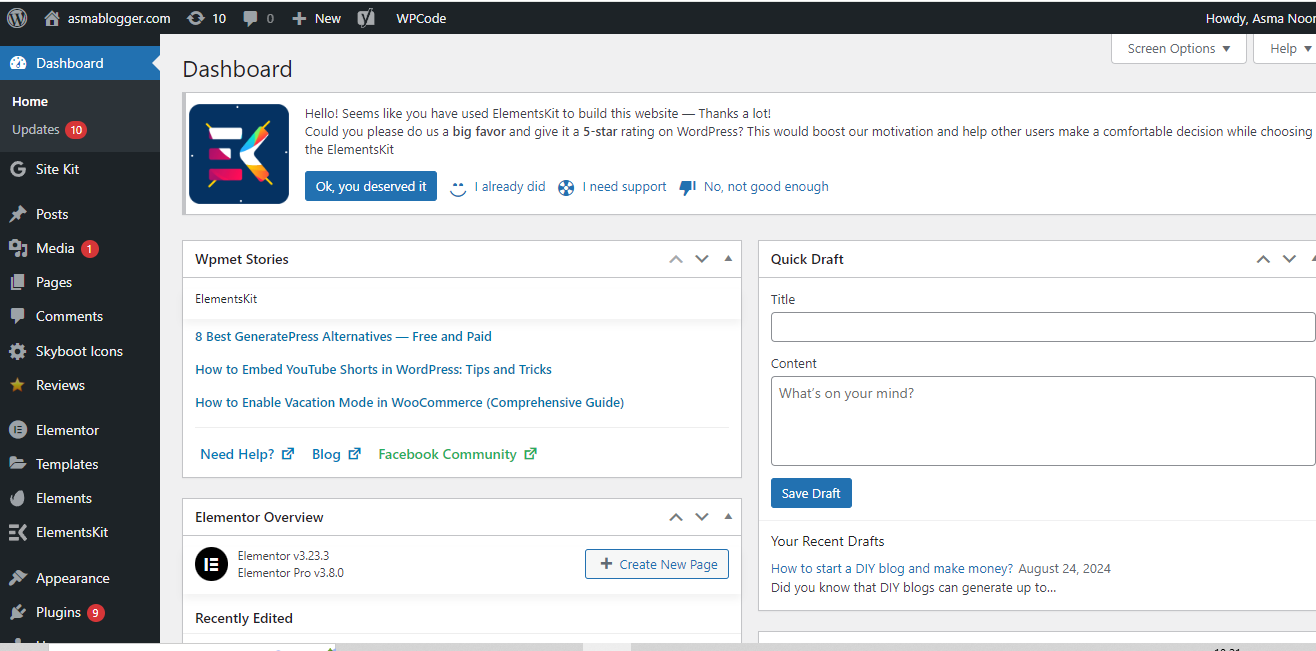
Choose a Domain Name and Hosting Provider
Next up: your domain name and hosting. This part can be a bit tricky, but don’t stress. For your domain name, you want something that’s easy to remember and not too specific. Your name is a solid choice. I mean, if it’s good enough for big-time bloggers, it’s good enough for you. As for hosting, Hostinger is a great option. Their plans start super cheap, and you get a free domain, SSL certificates, and more.
Tips for Choosing a Domain Name
- Keep It Simple: Easy to spell and remember.
- Avoid Narrow Domain Name: Don’t box yourself in.
- Consider Your Name: It’s personal and memorable.
Customize Your Blog’s Design and Layout
Now, let’s dive into design. Customizing your blog’s look doesn’t have to be a headache. With WordPress, you can use themes to make it easy. Think of themes like buying a ready-made outfit for your blog. You pick a style you like—Kadence is a personal fave because it’s clean, fast, and easy to tweak. You don’t have to start from scratch; just choose a theme, install it, and make it yours.
Choose a Theme
- Kadence: Minimalistic and fast.
- Elementor, Divi, Astra, StudioPress: Great options too.
- Avoid Free Themes: They often lack quality and support.
Customizing your blog is like setting up your personal space on the internet. It should reflect your style and make it easy for your readers to navigate. So go ahead, pick a theme, customize it, and start blogging. You’ve got this!
Step 3 (How to start a DIY blog): Plan, Write and Publish Your Content
Make SEO Strategies
When diving into SEO for your DIY blog, think of it like trying to get noticed in a noisy room. Here’s how you can stand out:
- Focus on Long-Tail Keywords: Use specific phrases like “how to refurbish old furniture” instead of broad terms. They’re less competitive and attract more targeted traffic.
- Optimize for Featured Snippets: Format content clearly with bullet points or numbered lists to increase your chances of appearing in these top spots on Google.
- Improve User Experience: Ensure your blog loads quickly and looks good on mobile devices as a slow or clunky site can turn readers away.
- Leverage Internal Linking: Link to your older posts to keep readers on your site longer and boost your SEO.
- Update Old Content: Refresh posts with new information to maintain relevance and improve rankings.

You May Find It Interesting: Content-Centric SEO: A Comprehensive Guide
Write High-Quality Content
Writing engaging DIY posts is all about connecting with your audience and delivering value. Start by diving into the details. Give step-by-step instructions, sprinkle in some practical tips, and be real about potential hiccups. Readers love it when you’re honest about the challenges you faced and how you overcame them. It makes your content relatable and builds trust.
Don’t forget to use a conversational tone. It’s like you’re chatting with a friend over coffee, sharing your latest project. Keep your language simple and avoid jargon—unless you explain it. And remember, good DIY posts should inspire and guide, so include plenty of visuals and actionable advice.
Use High-Quality Images and Videos
Okay, let’s talk visuals. High-quality images and videos are game-changers for DIY blogs. They’re not just decoration; they’re essential for helping your readers understand and follow along. When you use crisp, clear photos or videos, it makes a huge difference. It’s like giving them a front-row seat to your project.
Avoid blurry or poorly lit images. They can be a real turn-off. Invest in good lighting or use natural light to make your photos pop. For videos, make sure the audio is clear, and the visuals are steady. This way, your audience can easily grasp the steps you’re demonstrating. If you can, add some close-ups or before-and-after shots to show off your hard work.
Organize and Categorize Your Content
Keeping your DIY blog organized is crucial. It helps your readers find what they’re looking for and keeps them coming back. Start by categorizing your posts into clear sections. For example, you might have categories like “Home Improvement,” “Crafts,” or “Garden Projects.” Each category should cover a specific area of interest.
Create a content calendar to plan your posts and ensure a steady flow of fresh content. This helps you stay on track and avoid last-minute scrambles. Also, use tags to highlight key topics or materials used. This way, if someone is searching for a specific project, they can easily find it on your blog.
Step 4 (How to start a DIY blog): Promote Your DIY Blog
Getting your DIY blog out there can feel like a never-ending task, but with a few solid strategies, you’ll start seeing some traction. Here’s how to effectively promote your DIY blog and grow your audience.
Find Your Community
Engage in DIY Forums and Groups Join forums, Facebook groups, or niche Reddit threads related to DIY. Participate in discussions, share tips, and, when appropriate, link to your blog. The key is to be genuinely helpful rather than just self-promotional.
Network with Other DIY Enthusiasts Build relationships with other DIY bloggers and creators. Comment on their posts, collaborate on projects, or simply exchange ideas. This can lead to valuable exposure and potential guest posting opportunities. Learn: How to Write a Collaboration Email That Closes the Deal?
Build Your Email List
Offer Value to Subscribers Create a lead magnet, like a free e-book or exclusive DIY plans, to entice visitors to subscribe to your newsletter. Once you have their emails, you can send them updates about new content and special offers.
Regularly Update Your List Send out newsletters consistently to keep your audience engaged. Include links to your latest posts, DIY tips, and any relevant updates to maintain interest and drive traffic back to your blog.
Check out: What Are the Benefits of Email Communication? My Insights
Use SEO Techniques
Optimize for Keywords Research keywords related to your DIY niche and use them in your blog titles, headers, and content. This will help your blog rank higher in search engine results and attract more visitors.
Improve On-Page SEO Ensure your blog posts are SEO-friendly by using proper headings, meta descriptions, and alt text for images. Internal linking to other relevant posts can also help keep readers on your site longer.
You can optimize your blog posts using tools like Yoast SEO. This plugin simplifies search engine optimization by letting you easily check how well your content is optimized, add keywords, and take advantage of various other helpful SEO features.
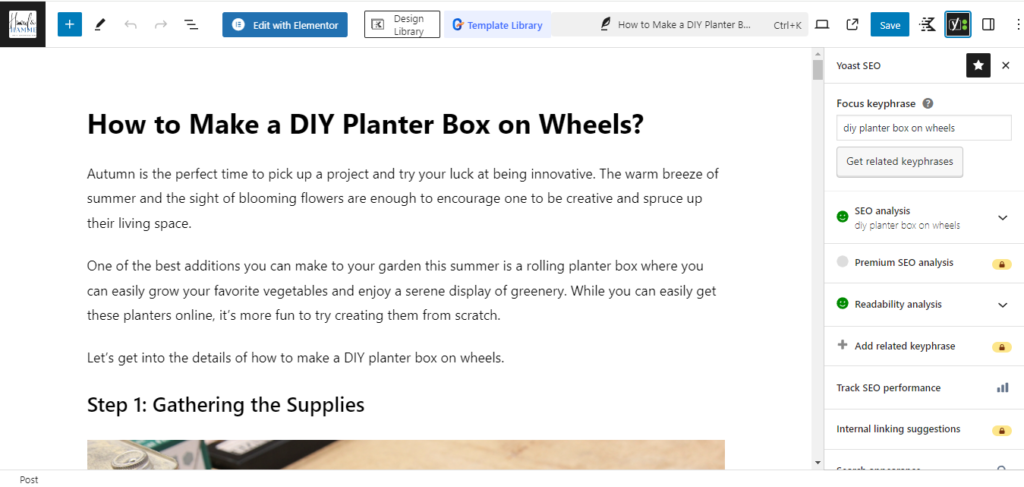
You May Like How to Build a Blog Following? Expert Tips
Collaborate and Guest Post
Partner with Other Bloggers Reach out to fellow DIY bloggers for collaboration opportunities. Guest posting on their sites can introduce your blog to their audience and vice versa, creating a mutually beneficial relationship. You can also write a sponsored blog post if you have a good budget. Check out: How to Write a Sponsored Blog Post That Converts?
Work with Local Craft Stores Consider partnering with local craft stores for cross-promotions. They might share your content with their customers in exchange for featuring their products in your blog posts.
Use Social Media to Increase Visibility
Social media is your megaphone for the world. Here’s how to use it effectively:
Share Engaging Content: Post eye-catching photos and short videos of your DIY projects on platforms like Instagram and Pinterest. Use engaging captions and relevant hashtags.
Interact with Followers: Respond to comments, answer questions, and build a community. It fosters loyalty and keeps your audience engaged.
You May Like My Post: How to Promote Your Blog Without Social Media: Tested Strategies
Step 5 (How to start a DIY blog): Monetize Your Blog
Alright, let’s dive into the money-making side of blogging. If you’ve been pouring your heart into your DIY blog, it’s time to cash in on all that hard work. Here’s a rundown of the top monetization options:
1. Affiliate Marketing:
This is a solid way to earn money by recommending products you love. You drop affiliate links in your posts, and when readers buy through those links, you get a commission. It’s a win-win—you help your readers find useful tools while earning a bit of cash. For example, if you’ve got a killer tutorial on woodworking, linking to the best saws or wood glue can boost your income. So, Just make sure to choose affiliate programs that align with your niche.
2. Display Ads:
You can set up ads on your blog through networks like Google AdSense. Every time someone clicks on an ad or views it, you earn money. It’s straightforward but can be a bit hit-or-miss depending on your traffic. Ads can sometimes be a distraction, so try to balance them without overwhelming your readers.
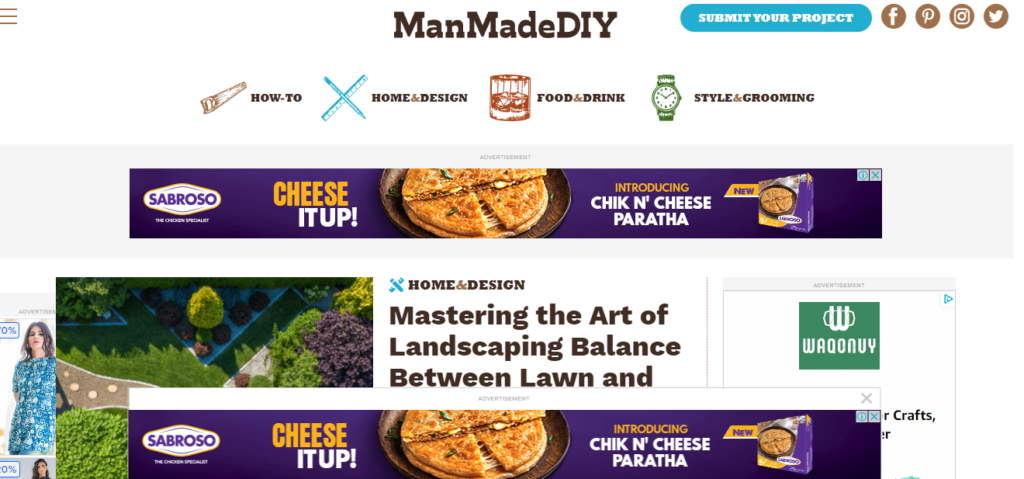
3. Selling Your Own Products:
This is where your DIY skills really shine. You can sell digital products like eBooks or printables or even physical items like handmade crafts. If you’re good at something specific, turning that into a product can be quite profitable. Think about what your audience might need and tailor your products to fit those needs.
4. Offer Subscriptions
Got a DIY blog with a buzzing community? A subscription model could be your next big move! By charging a regular fee—monthly or yearly—you offer exclusive access to premium content. Additionally, it’s a great way to create a steady income stream and keep that cash flow predictable.
In exchange, you could give your subscribers special DIY tutorials, behind-the-scenes project guides, or access to a private forum. Imagine your most loyal followers getting early access to your latest hacks and tips!
5. Offer Coaching
If you’re a DIY pro, why not turn your expertise into profit? Set up online courses or offer personalized coaching to your readers. It’s a solid way to monetize your blog while sharing your knowledge.
You could develop DIY video courses, downloadable guides, or even offer live coaching sessions. Building a comprehensive curriculum takes some upfront work, but with a dedicated audience, it can be a game-changer.
Step 6: Track and Analyze Your Blog’s Performance
Keeping tabs on how your blog is doing is crucial. Here’s how to track your performance:
1. Use Analytics Tools: Google Analytics is your best friend here. It tracks page views, bounce rates, and user behavior. Regularly check these metrics to understand what’s working and what’s not.
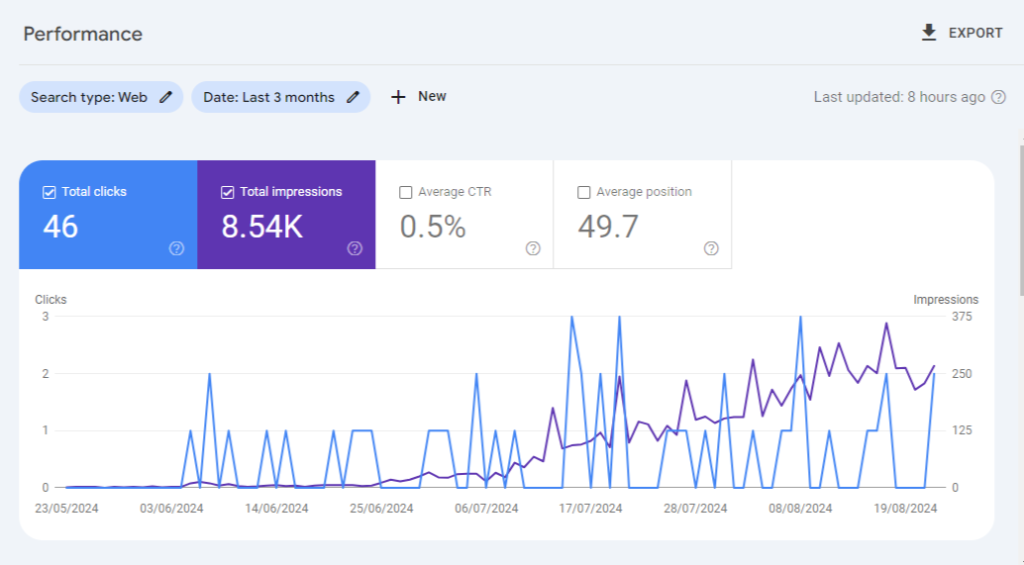
2. Monitor Ad Performance: If you’re running ads, keep an eye on their performance. Look at metrics like click-through rates and revenue per thousand impressions. This helps you tweak your strategy and maximize your earnings.
3. Track Affiliate Links: Use link tracking tools to see which affiliate links are performing best. This can guide you on which products to feature more prominently in your content.
4. Analyze Engagement: Check comments, shares, and social media interactions to gauge how your content resonates with readers. High engagement often translates to better opportunities with advertisers.
Why Hire a Professional to Start Your DIY Blog?
So, you’re thinking about starting a DIY blog, and you’re wondering if it’s worth bringing in a pro to help. Let me tell you, from my experience managing tons of DIY blogs, having a professional on your team can be a game-changer. Here’s why:
Expertise in SEO
Let’s face it, SEO can be a bit of a head-scratcher. A professional knows how to find the best keywords and weave them into your posts without making them sound awkward. They also understand how to use internal and external links to boost your blog’s visibility. Additionally, it’s not just about getting people to your blog; it’s about keeping them there.
Top-Notch Content Quality
Ever tried writing a blog post in the middle of a busy day? It’s not easy to stay focused. Professionals are pros at meeting deadlines and keeping content fresh and engaging. They can create plagiarism-free content that not only reads well but also looks great on your blog.
Better Engagement with Your Audience
A pro can help keep your content engaging and consistent. Regular updates mean your readers will keep coming back for more. Plus, they know how to write posts that spark conversations and build a community around your blog.
Fresh Perspectives
Sometimes, we get too close to our own work. A professional can offer new ideas and viewpoints that you might not have considered. So, this can help your blog stand out and keep things interesting for your readers.
Cost-Effective Solution
Hiring a freelancer or a professional blogger can actually be cheaper than hiring a full-time staff member. You pay for the content you need, and you don’t have to worry about the overhead costs of a full-time employee.
Discipline and Reliability
Professionals are disciplined about deadlines. They’ll make sure your blog stays on schedule, so you don’t have to stress about missed posts or last-minute scrambles.
If you’re feeling overwhelmed by the thought of setting up and managing your DIY blog, why not let me handle it for you? I offer comprehensive blog management services that cover everything from content creation and SEO to maintaining a regular posting schedule. I’ve helped many clients build successful DIY blogs, and I’d love to help you too. You can focus on your creative projects while I handle the nitty-gritty of blog management.
Conclusion: How to start a DIY blog and Make It Profitable?
So, I’ve explored how to start your DIY blog and turn it into a money-maker. You’ve got the tools to choose your niche, set up your blog, and write engaging content. Additionally, Customize your approach to fit your style and audience, and stay ethical and authentic in your blogging efforts.
Ready to get started? Set up your blog, brainstorm your content, and begin crafting posts. Need help? I offer blog management services to guide you every step of the way.
Share your thoughts or tips in the comments below on how to start a DIY blog, and don’t forget to spread the word if you found this guide helpful. Here’s to your blogging success!

